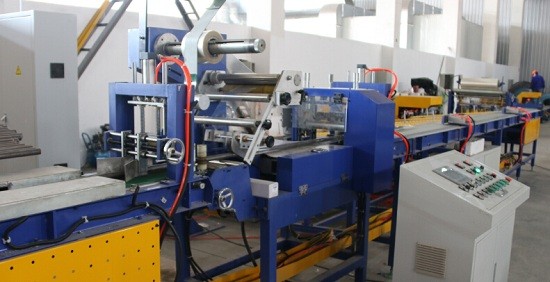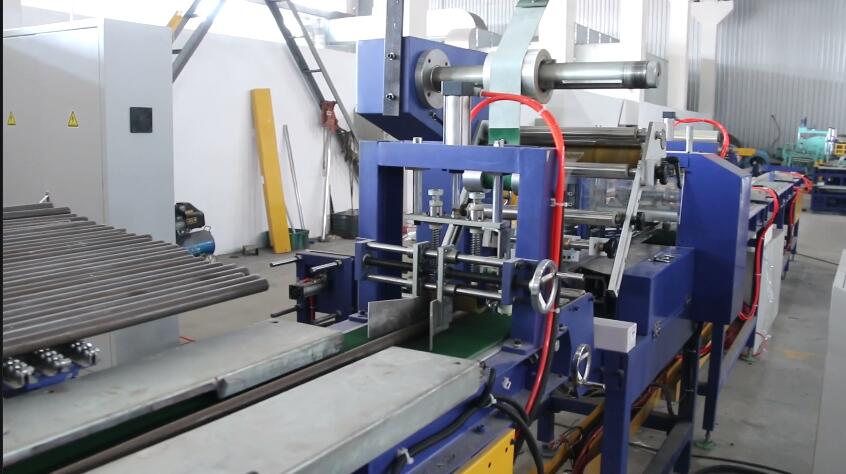Enhancing Protection and Efficiency: The Role of Stainless Steel Tube Bag Packing Machines
Stainless steel tubes, valued for their durability and corrosion resistance, require careful handling to maintain their pristine surface finish. Scratches, abrasions, or contamination during storage and transport can compromise quality and lead to costly rejects. An automated stainless steel tube bag packing machine offers a robust solution, providing essential surface protection and streamlining packaging operations.
Understanding the Need for Protective Packaging
From the moment a stainless steel tube leaves the production or finishing line until it reaches its final destination, it's vulnerable to damage. Manual handling, stacking, and the rigors of transportation can easily mar the surface. Protective bagging creates a barrier against:
- Scratches and scuffs
- Dust and dirt ingress
- Moisture and environmental contaminants
- Damage from contact with other items during transit
How Automated Tube Bagging Machines Work

These sophisticated systems automate the process of encasing individual or bundled tubes in protective bags or film sleeves. While designs vary, a typical workflow involves:
- Infeed: Tubes are loaded onto an infeed conveyor, often directly from a cutting machine or finishing line. Sensors ensure proper positioning.
- Bag Application: The machine dispenses a pre-made bag or forms a sleeve from a roll of plastic film (commonly polyethylene) around the tube.
- Sealing: Heat sealing mechanisms create a secure closure at one or both ends of the bag/sleeve, encasing the tube completely.
- Cutting (if using film roll): An automated cutter separates the bagged tube from the film supply.
- Outfeed: The packaged tube moves onto an outfeed conveyor, ready for bundling, stacking, or further processing.
This automated sequence significantly increases throughput compared to manual bagging methods.
Key Components and Features
A typical stainless steel tube bag packing machine incorporates several key systems:
- Conveyor System: Transports tubes smoothly through the machine. Often includes V-rollers or belts designed to handle cylindrical shapes.
- Bag/Film Dispensing Unit: Holds and feeds pre-made bags or unwinds rolls of packaging film.
- Bag Opening/Forming Station: Uses air jets or mechanical arms to open pre-made bags or form film into a sleeve around the tube.
- Sealing Jaws/Bars: Apply heat and pressure to create strong, reliable seals.
- Cutting Mechanism: Precisely cuts the film after sealing (for sleeve applications).
- Control System (PLC): Manages machine operations, timing, sequencing, and allows for parameter adjustments (e.g., bag length, sealing temperature).
- Sensors: Detect tube presence, position, and ensure accurate machine function.
Advanced models may offer features like automatic bag size adjustment, integrated printing for labeling, and varying levels of automation.
Operational Advantages of Automated Bagging
Implementing an automated bagging solution delivers significant benefits beyond basic protection:
- Enhanced Surface Protection: Consistent, tight wrapping minimizes the risk of scratches and contamination, crucial for high-finish stainless steel grades.
- Increased Efficiency: Drastically reduces the time and labor required compared to manual bagging, boosting overall production throughput.
- Improved Consistency: Ensures every tube receives uniform packaging quality, enhancing product presentation and protection reliability.
- Reduced Labor Costs: Frees up personnel from tedious manual tasks for more value-added activities.
- Seamless Integration: These machines are often designed for integration into larger automated lines. For instance, they can receive tubes directly from cutting stations and feed packaged tubes into automatic pipe bundle packing lines, creating a fully automated end-of-line solution.
- Material Optimization: Precise control over bag length or film usage minimizes waste compared to manual methods.
Key Considerations for Selection

When evaluating a stainless steel tube bag packing machine, consider:
- Tube Dimensions: Machine capacity must match the range of tube diameters and lengths being processed.
- Required Throughput: Match the machine's speed (tubes per minute/hour) to your production needs.
- Packaging Material: Compatibility with desired bag types (pre-made, gusseted) or film specifications (PE, stretch film).
- Level of Automation: Standalone machine vs. fully integrated into a production line.
- Sealing Quality: Ensure the sealing mechanism is robust and suitable for the chosen film/bag material.
- Footprint and Layout: Available space in the facility.
Conclusion
For manufacturers and processors working with stainless steel tubes, maintaining surface integrity is paramount. An automatic stainless steel tube bag packing machine provides an efficient, reliable, and consistent method for applying protective packaging. By automating this crucial step, businesses can safeguard product quality, reduce labor costs, increase throughput, and seamlessly integrate packaging into their overall production flow, ensuring tubes arrive at their destination in optimal condition.